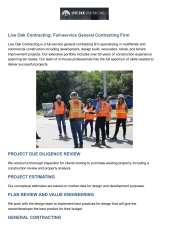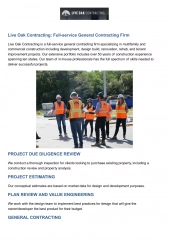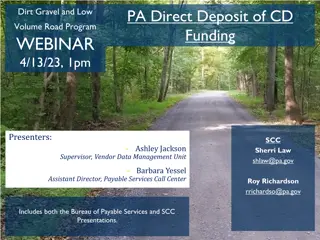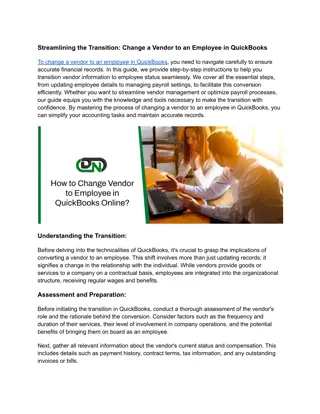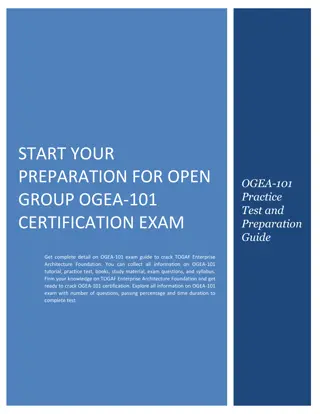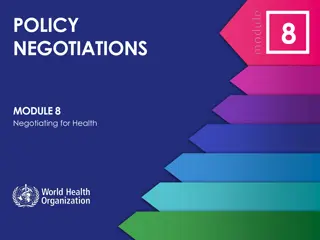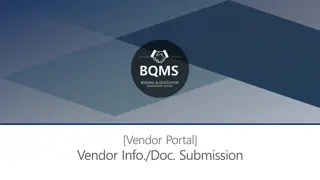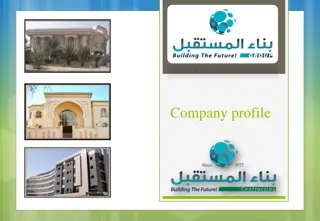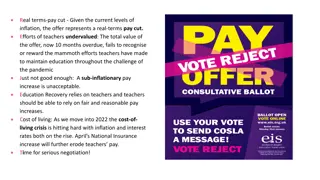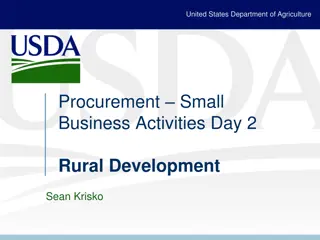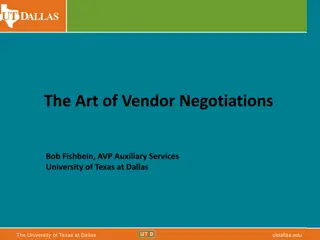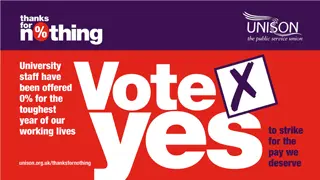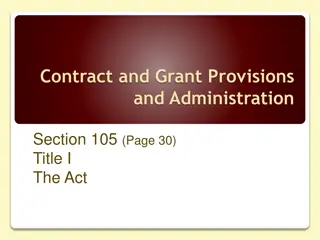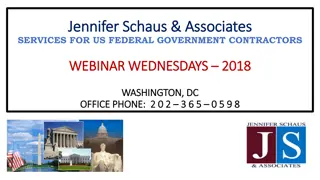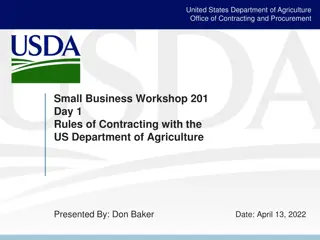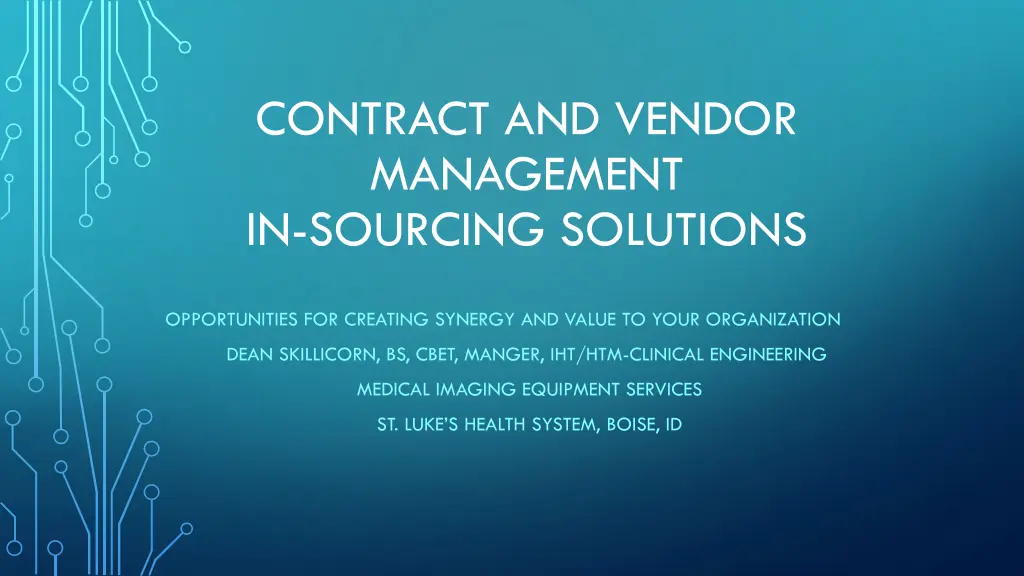
Optimizing Contract and Vendor Management Strategies
Explore opportunities for creating synergy and value through in-sourcing solutions in contract and vendor management. Understand the complexity of service agreements, analyze data to support decision-making, and build flexible contract structures. Learn how to manage agreements effectively and hold vendors accountable for performance. Enhance your organization's service delivery through strategic negotiations and key performance indicators.
Download Presentation

Please find below an Image/Link to download the presentation.
The content on the website is provided AS IS for your information and personal use only. It may not be sold, licensed, or shared on other websites without obtaining consent from the author. If you encounter any issues during the download, it is possible that the publisher has removed the file from their server.
You are allowed to download the files provided on this website for personal or commercial use, subject to the condition that they are used lawfully. All files are the property of their respective owners.
The content on the website is provided AS IS for your information and personal use only. It may not be sold, licensed, or shared on other websites without obtaining consent from the author.
E N D
Presentation Transcript
CONTRACT AND VENDOR MANAGEMENT IN-SOURCING SOLUTIONS OPPORTUNITIES FOR CREATING SYNERGY AND VALUE TO YOUR ORGANIZATION DEAN SKILLICORN, BS, CBET, MANGER, IHT/HTM-CLINICAL ENGINEERING MEDICAL IMAGING EQUIPMENT SERVICES ST. LUKE S HEALTH SYSTEM, BOISE, ID
AGENDA FOR DISCUSSION Understanding contracts Data is knowledge that leads to better decisions. Analyzing the data Support your decisions financially and clinically. Building Contract Structures Flexibile and objective deliverables. Managing and Assessing Agreements The devil is in the details. Negotiating Agreements It s about teamwork. Establishing KPI s . Be SMART! Managing OEMs & Vendors Hold them accountable, it s your role. Point of Sale Agreements-An Option? Managing Fleet Technology Measure twice, cut once. Make Rights When all else fails.
UNDERSTANDING CONTRACTS-DATA IS KNOWLEDGE THAT LEADS TO BETTER DECISIONS Do you understand the complexity and details of all your service agreements? What is the most appropriate data needed to initiate this process? How does the service vendor price their agreements? What are value added services? And do you need them? How to influence agreement language and which language can be changed? What performance indicators are and how can they positively affect service delivery for your organization? How and when to hold service vendor performance review meetings.
ANALYZING THE DATA-SUPPORT YOUR DECISIONS FINANCIALLY AND CLINICALLY How do service vendors set agreement pricing and their own budgets? What does the service vendor s data indicate? Are value added services impacting the worth of the delivered service? How to evaluate them. Determine the volume of labor and parts a vendor is anticipating to spend with your equipment via an agreement versus hourly billed service (HBS). How to compile all data into dashboards, key performance indicators (KPIs), etc. that create better agreement deliverables, language, and overall service.
BUILDING CONTRACT STRUCTURE- FLEXIBLE AND OBJECTIVE DELIVERABLES Work with your Supply Chain and Contracting teams. Write your own terms and conditions first, then review the vendor s. Establish your KPIs, focusing on your values and needs (e.g., patient safety, useful uptime, staff schedules, etc.). Include cancellation provisions (e.g., loss of business, debarment, technology obsolescence, etc. Dependent upon the volume of business with your vendor and legal allowances. Review all contractual inclusions for value and have measurable deliverables in your KPI s Work closely with your Supply Chain Management and Legal Departments to ensure the contract reflects what your organizational needs are.
MANAGING AND ASSESSING AGREEMENTS-THE DEVIL IS IN THE DETAILS Quarterly meeting cadence, at a minimum. Structure meetings primarily around performance. Does your data align with vendor s? If not, why? Compare to established KPIs. What tools do you use in your assessment? How do you monitor vendor performance? Defined methods, processes, and systems? Who within your organization helps evaluate the vendor s effectiveness?
NEGOTIATING CONTRACTS- ITS ABOUT TEAMWORK Leverage your data to support your needs. Understand the vendor s pricing methodology; it s different for each modality. Understand list prices for base coverage and line-item key components: Tubes Image intensifiers After hours labor Detectors Transducers Start with agreement list price; often one (1) year term. Avoid multi-year discounting until all equipment inventory, their options, etc. are accounted for. Understand Mean Time Between Failure (MTBF). Refine to build Master Service Agreements if appropriate Co-terminus dates for all devices. One invoice Standard T/C s for all systems and deliverables! Know your leverage positions and negotiate from a position of power! Additional clinical education
ESTABLISHING KPIS- BE SMART!! Vendor s are built around their margins and metrics. Refocus to meet your organization s patient care, safety expectations. Involve your clinical customers. What affects their operations? Involve your Supply Chain Management to align with other organizational needs with the vendor. All need to be SMART -- Specific, Measurable, Attainable, Realistic, and Time-Bound. Are vendor s manpower quantities and levels guaranteed to meet your needs? Align KPIs to the vendor s coverage levels and delivery guarantees. Evaluate quarterly against multiple year track record; use as a tool, not measurement. Ensure the service vendor knows how their services affect your organization. Does KPI non-compliance result in vendor financial penalty? Work toward all vendor equipment/service agreements to be co-terminus.
POINT OF SALE- AN OPTION?? Point of Sale Service Agreements: POS best when technology is new to the org and/or first generation system. Look at reducing service years from 5 to 3 years to gain negation advantage Provide extended service coverage coming off warranty. Provide the OEM with guaranteed revenue for the vendor before warranty expires. Normally 5 years. Normally tied to a capital discount at purchase. Need to be appropriately vetted with the same data as any contract. Contracts today cost 100% of the value of the equipment sales price in 4-5 years. 20-24% COSR. What benefit do you get? Dependent on your operations!!! Opportunity to engage organization team Suggestion: evaluate having under 1- 2 years warranty to be able to see how the system is performing before contracting.
MANAGING FLEET TECHNOLOGY-MEASURE TWICE, CUT ONCE Use your data and Vendor s to build future models for Life Cycle Planning The vendor should be able to supply all data such as Operating System, SW/HW Revs, and EOSL status. Technology Planning is important for Service Planning! Build planning with key organization members. Establish replacement plans by modality based upon when to replace Have established protocols for evaluating replacement. Use methods like Gannt Charting, End of Life Data to assist. Use Service History Data to understand under performing systems Build capital replacement models that stage out equipment from the beginning of implementation in your facility to retirement. Understand that most product life lasts for about 18-20 years based upon if you have continuously upgraded your systems. If you have not, look out for early end of life and forklift upgrades. Understand how Obsolescence management works.
MAKE RIGHTS-UNDERSTAND THEM, ASK FOR THEM Definition: OEM corrects a situation (i.e., poor performance, multiple repeating failures, does not meet specifications, etc.) for a customer with a concession (i.e., replacement, etc.). Agreement s terms and conditions must have clear language supporting healthcare organization s position. Can t find, do, etc. is not an excuse. Lengthy process. Requires patience. Always about patient care and safety Always involve your clinical and administrative team (e.g., Supply Chain, Radiology management, Nursing, Risk Management, Information Technology). Stay engaged. Stay firm. Do not waver in your direction and commitment.
SUMMARY-TYING IT ALL TOGETHER Understand all the agreement s language and have internal terms and conditions Evaluate service data for 3-5 years Build in-house models for Hourly Based Service with internal line-item pricing Ensure terms and conditions reflect the operation needs of your organization Meaningful KPIs and indicators need to be included in the agreement. Plan for technology replacement using both OEM and internal data. Own and manager your business and the vendors follow.

